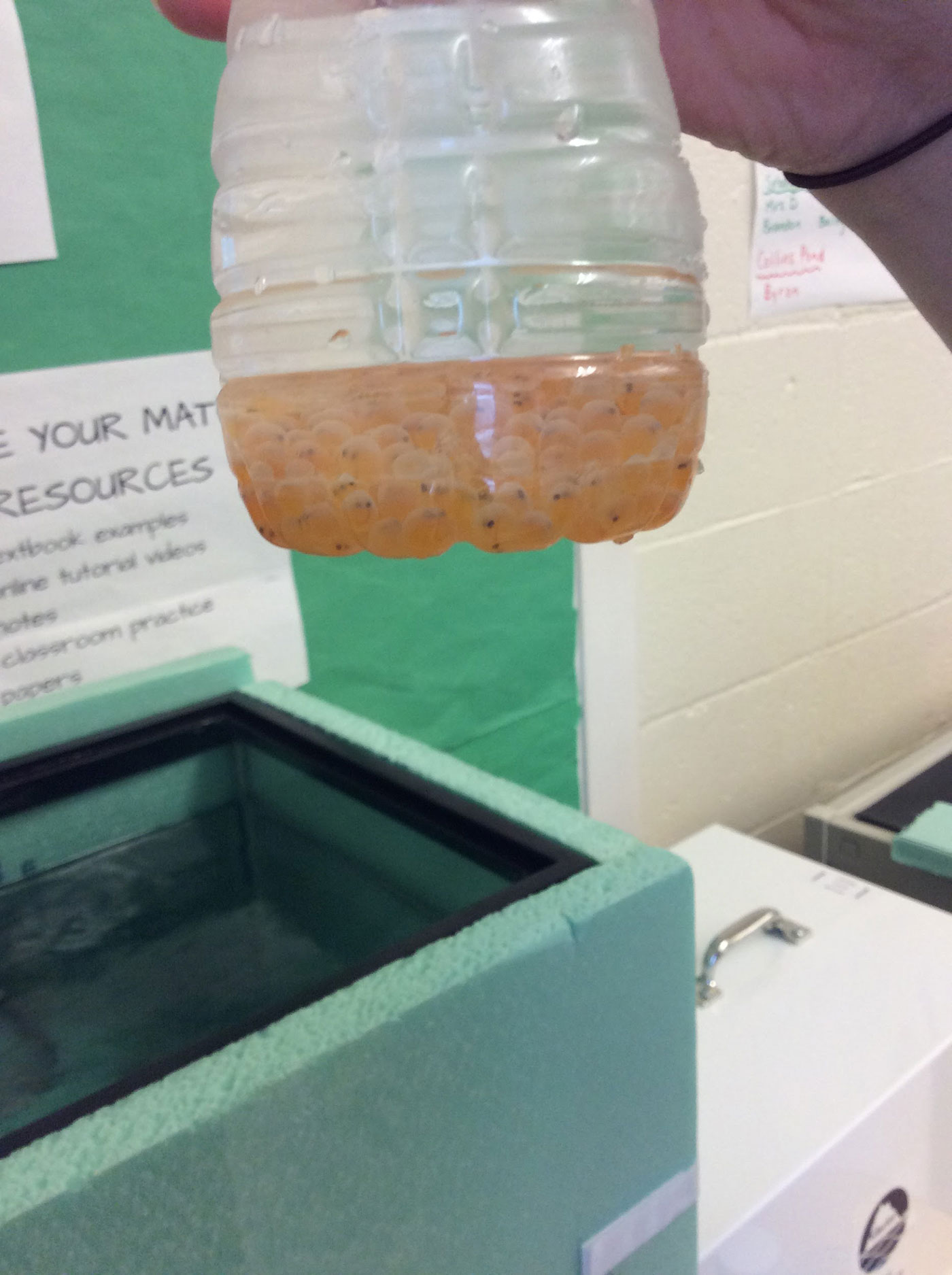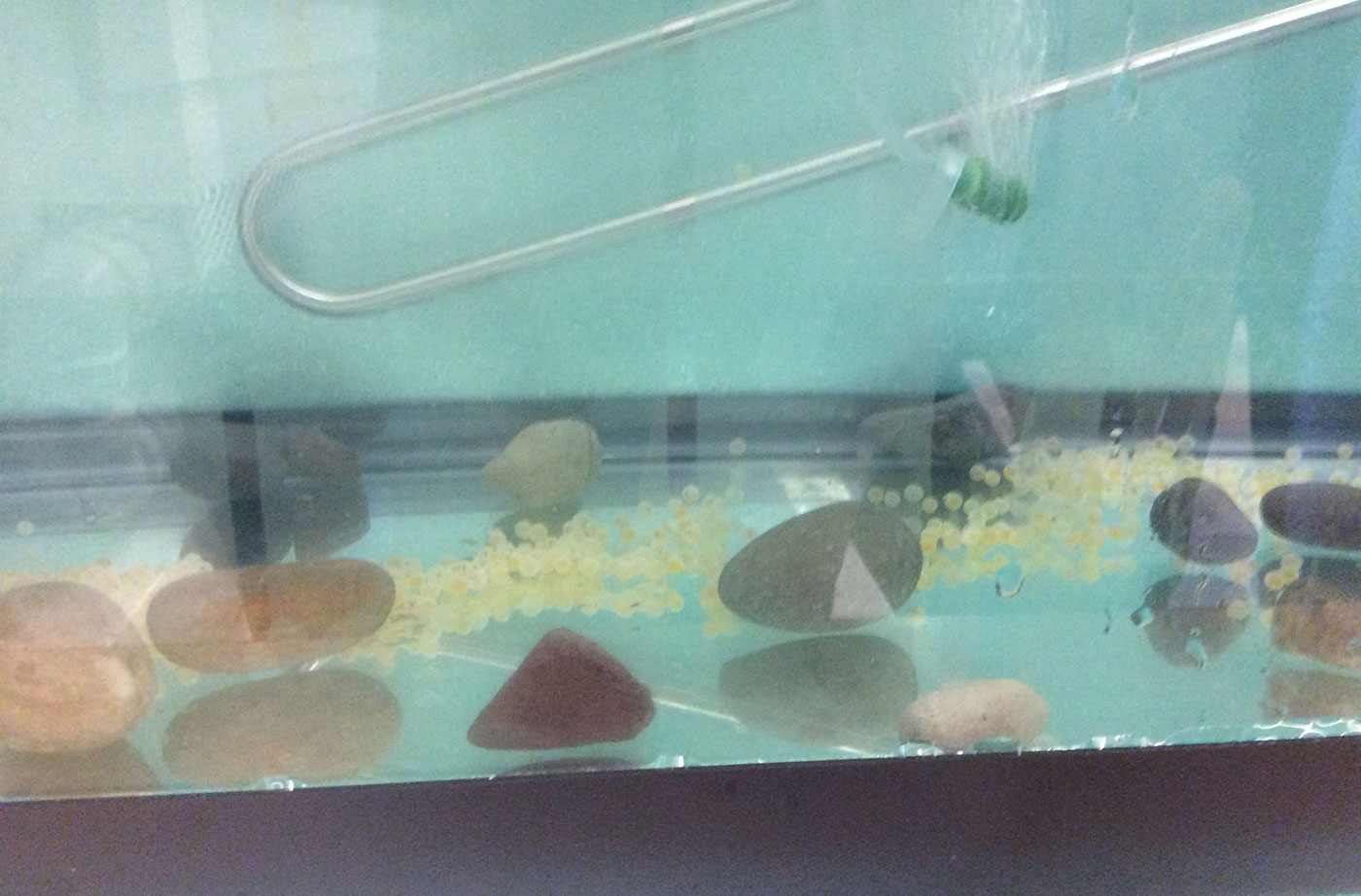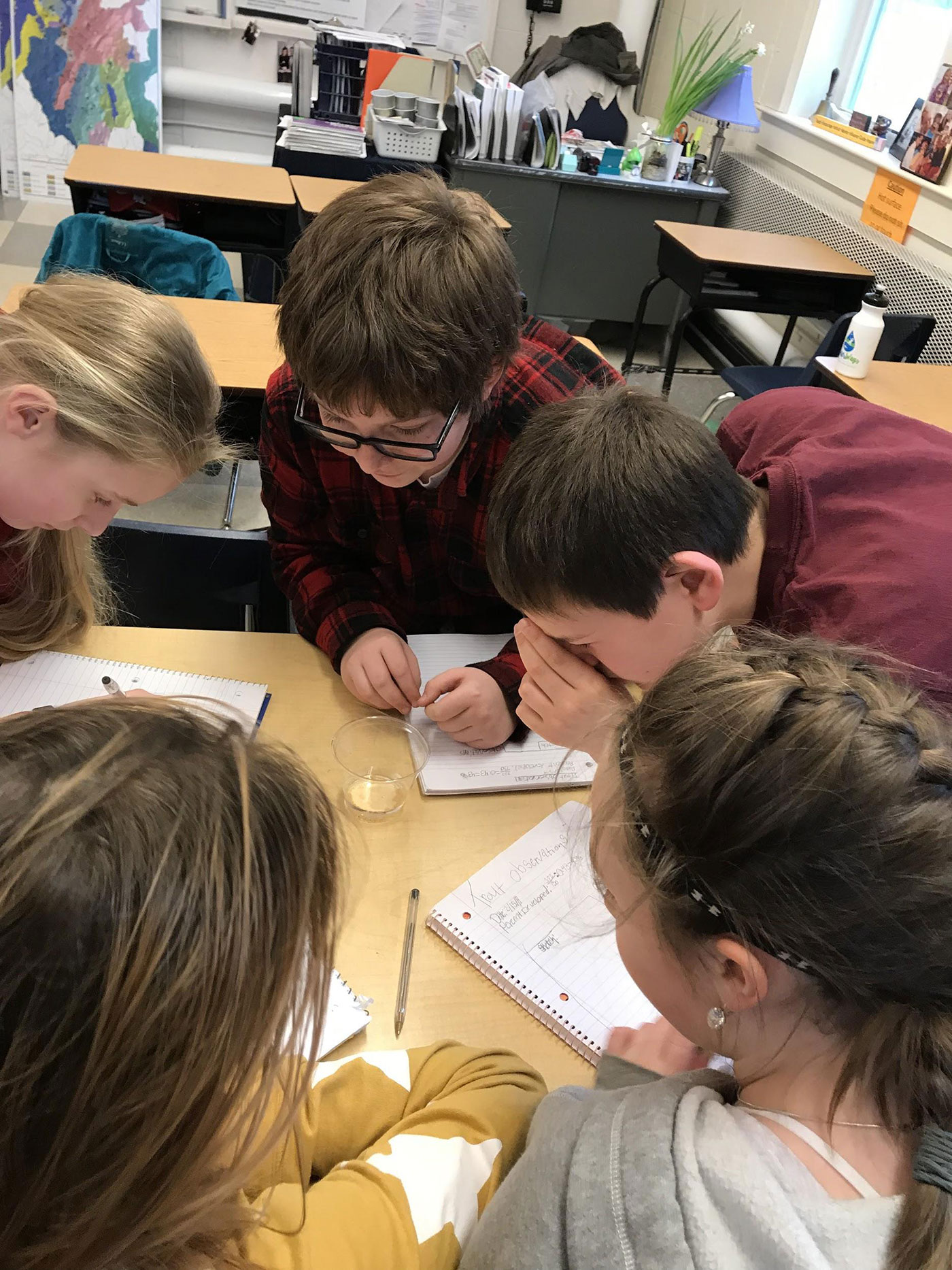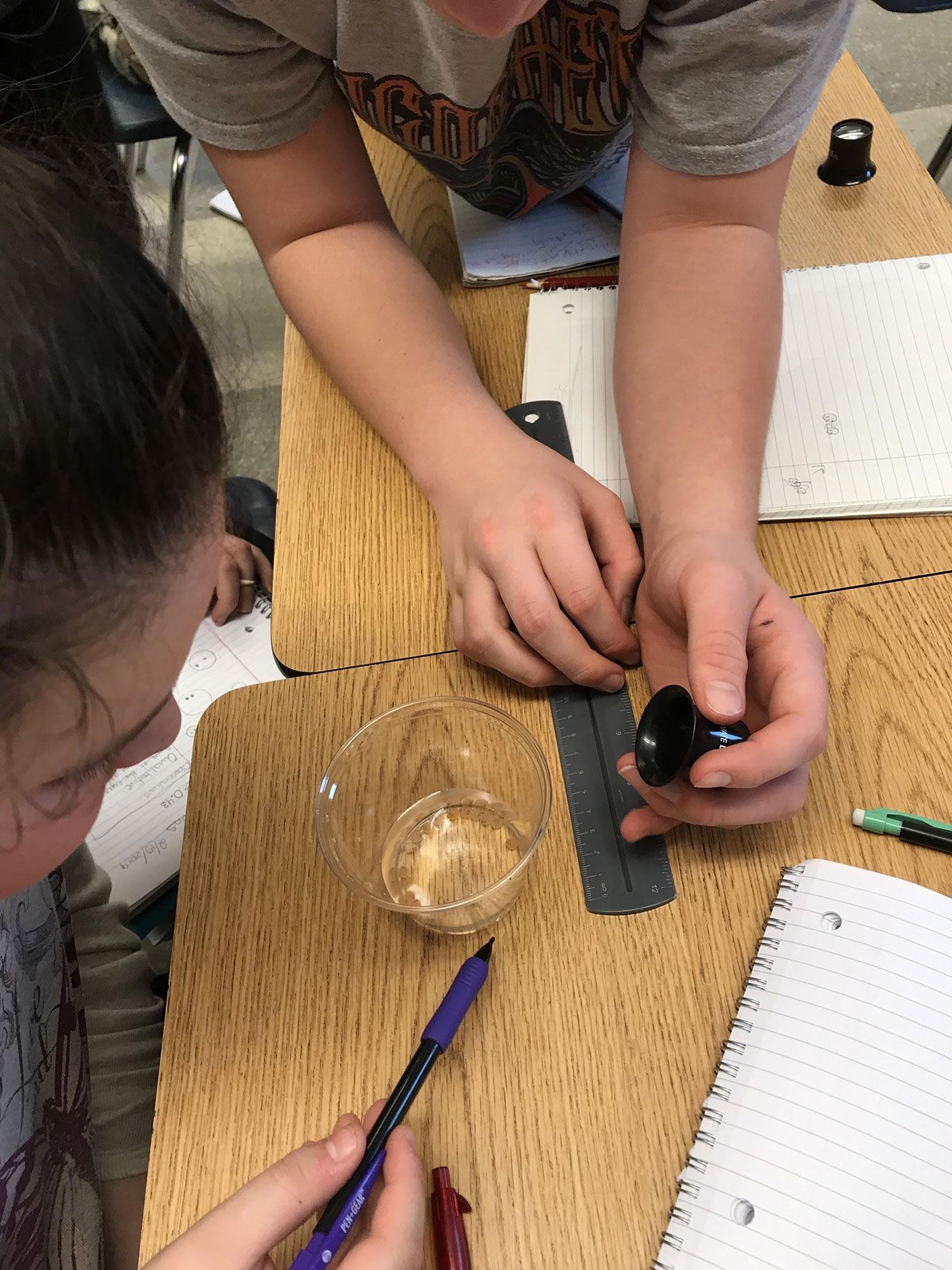On February 8th, sixth grade students in Mrs. Franzoni’s class at Windham Middle School welcomed 300 brook trout in the eyed egg stage and will be studying them in part thanks to a grant from the Natural Resources Council of Maine. Prior to delivery, students learned about the water cycle, water pollution, and the impact humans have on water quality. Students studied common nonpoint source pollutants, watersheds, best management practices, and brook trout as an indicator species. Studying brook trout and its reliance on healthy water has propelled student interest into raising and caring for brook trout in our classroom.

300 brook trout eggs delivered to our classroom by Maine Department of Inland Fisheries and Wildlife.
Excitement around the brook trout delivery was heightened as the tank, chiller, and other materials arrived in early January. Students helped to set up the tank and prepare it for the delivery of the trout eggs. We began our project by studying the life cycle of brook trout, specifically the early stages of their life cycle that the brook trout will be in while they are in our care. While learning about the life cycle of the brook trout, students learned that the tank mimics the specialized habitat of sensitive brook trout that require cold, healthy, oxygen-rich water to survive. From the insulation around the tank to the chiller, filter, and aerator, there is a reason and purpose for everything.

300 brook trout eggs getting comfortable in the tank in our classroom that is designed to mimic the specialized habitat of sensitive brook trout that require cold, healthy, oxygen-rich water to survive.
In addition to learning about the life cycle of the brook trout, students have also been collecting data. They conduct daily tank inspections to make sure everything is working properly. They also monitor trout development by calculating daily thermal units and total thermal units. From these numbers we have calculated the percent our trout have developed and predicted when they will be ready for release. Recently students had an opportunity to observe a sample of the eggs outside of the tank. They sketched the egg and recorded both qualitative and quantitative observations. Students will observe the trout regularly throughout development looking for anatomical changes and adaptations. They will also continue to monitor trout development and complete daily tank inspections until the trout are released.

Students making their first observations of the brook trout. They will observe the trout regularly throughout development looking for anatomical changes and adaptations.
Learning about water quality while raising and caring for brook trout is important to the students because many of our students live or spend their summers on the water. Our school community is close to several different bodies of water including the Pleasant River where our trout will be released in May. Students are engaged because what they are learning about matters to them and they can apply it in very practical ways. The trout tank is their first stop when they come into the classroom and the last stop before they leave. Students care about the brook trout and are committed to caring for them until they are ready for release.

Students making qualitative and quantitative observations of the brook trout.










Leave a Reply